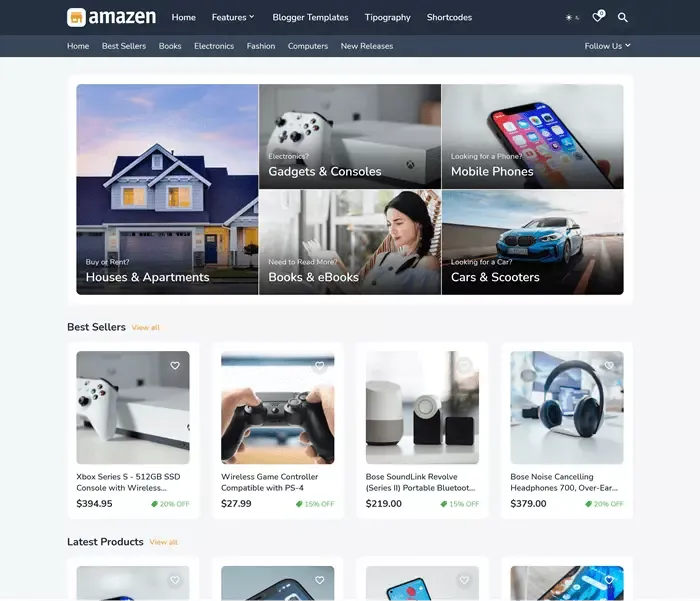How to Create a Brand?
Do you know that there is a brand that we encounter almost every day? It's Google. More than 90% of total searches go through this search engine. Monthly, over 100 billion searches are performed through Google.
It tells us that his appearance must be attractive and impressive. When we mention Google, the first associations with Google are a friendly, energetic, modern, engaged, and approachable company.
What is a brand?
The
American Marketing Association
brand definition is:
A brand is an identification symbol, sign,
logo, name, word, and sentence that companies use to distinguish their product
from others. A brand identity - can be created by combining one or more of
these components.
As we can read in Professor Keller's book
"Strategic Brand Management," this brand definition is incomplete. The brand
represents something more complex. A brand creates a certain level of
awareness, reputation, and prominence - and represents a set of feelings,
expectations, emotions, values, etc.
Why does the brand exist, and what is its purpose?
The first step on the way to creating a brand is defining the purpose of
the future brand. Purpose can be defined as a common goal with which customers
identify. It is what both you and the customers believe.
"People don't buy what you do; they buy why you do it. And what you do simply proves what you believe in." – Simon Sinek {alertInfo}
For a better understanding of the brand and effective planning of the branding strategy, the following questions can help:
- What do you want to change?
- How will you change it?
What is important for your brand?
Nowadays, more and more companies have socially responsible goals in
addition to profit.
Examples of socially liable goals:
- Employment of hard-to-employ categories
- Monetary donations to charitable organizations
- Volunteer actions
- Donations in the form of products for those who need help
- New technological and ecological solutions lower costs for businesses by reducing the environmental impact through process improvement, the use of alternative energy sources, and recycling.
If it is social entrepreneurship, companies are doing something they
care about. If it is an environmentally conscious business, companies can
reduce costs. But most importantly, these goals connect companies and
customers.
What are the values of your brand?
Values serve to guide employees towards the same goal. Values shape
corporate culture and influence business activities, not just marketing
activities. Values represent the beliefs and principles on which the company
operates.
Employees behave based on the values represented by the
brand, and they take responsibility for their actions. Values are also an
essential concern for potential employees, suppliers, distributors, and
customers/clients. Based on value, they decide whether to cooperate with
you.
That is why it is important to plan them carefully, introduce
employees to the values and make an effort to have them accepted by the
employees.
What kind of culture do you want to cultivate?
Brand culture is - the culture that a company cultivates to consistently
deliver its brand in the market. It is the way employees present the brand to
customers through joint work.
Cultures are not only expressions of
a brand - but they are also an expression of the people behind that brand - a
presentation of their work, behavior, and beliefs.
The company's
reputation will be significantly impacted by the culture you cultivate. You
want the work culture to be one that your coworkers and employees enjoy and
spread to others.
Read more about the culture at Identifying Your Brand Culture
Research your competitors
You must pay attention to what your competitors are doing and how they
are doing it. When you research them, you can see what they do well and what
they do poorly. You can use what is good so that you can be good at it, and
what they do poorly, you find a solution.
It can also be your
point of differentiation. If competitors have bad relations with customers,
you work on it and be better. It will be the point where you differ and the
reason why customers will choose you.
To make it easier to compare
competitors, the so-called "benchmarking," you can use different types of
tables.
Who are your customers?
You must first perform market segmentation, followed by targeting and
positioning to determine who your target customers are.
You can
read about segmentation in our blog post:
What is Market Segmentation and how to implement it?
You will read about targeting audience in the text: 8 Ways and Examples How to Find a Target Audience for Your Blog
To get to know your customers, you can create a buyer persona,
and how to do it, read our text
Buyer Persona - Get To Know Your Customers.
Define mission and vision?
By vision, we mean the future in which you want to see your company.
What have you achieved?
You have to believe in where you are going
and what you plan to achieve.
A mission statement is a statement of
what you intend to do and achieve. It is defined and created based on purpose
and vision.
What does your brand offer?
What do you offer better or more than your competition? Do you have
better quality products, are you cheaper or do you have better relations with
customers, are the products better designed and with more functions?
The
product or service you offer should solve a problem that customers have. They
must be aware of that problem - they have already looked for a solution to
that problem, and they are ready to pay for it. They must also have a
sufficient budget to provide the solution you offer them.
For example, if you offer premium products, customers want the best quality,
more functions, and better design. For premium products, customers are willing
to shell out more money because they expect to get more.
That's why
with premium products, the emphasis should not be on the price - because it is
not what the customer is looking for and is not the most influential item.
On
the other hand, pricing is a crucial consideration for some products. With
these products, clients don't need premium design or extra features because
the product serves its essential purpose at a low cost.
Get to know
the customers before you start defining the attributes for the promotion.
Research your target customer/user segment to determine what is important to
them.
We can take an example of solving the laundry problem. The
information that the washing machine has 1200 revolutions per minute does not
mean much to customers.
However, if you mention that the machine is quieter and lasts longer because
of less wear and tear and uncrowded clothes, the client will know what he is
receiving when he purchases your washing machine.
Visual identity
Start from what your brand is, from its purpose. Think of your brand as
a person. What would that person wear, and what colors? What would that person
say, and how would he behave.
Colors - Colors are more
important than we can imagine because the choice of color is very significant
for every brand. Colors are associated with certain feelings.
Colors and their combinations can have a significant impact on your users.
Different cultures, men, women, and age groups prefer different
colors.olors.
Logo - A logo is a great way to attract
customers' attention and a great way to remember and differentiate you from
others.
Text - In addition to what you will
communicate through your channels, the font and font size have a great
influence on the visual identity. Choose a font based on the defined personas
of your target group. Always stick to the rule of simplicity.
Slogan.
Short, clear, memorable.
Photos - When choosing images, they
must be original. You will place them through your communication channels
together with a slogan or a specific text. Images, can show your products,
service delivery processes, or something else associated with your brand. The
photos will include your logo and the colors you have chosen.
Consistency is an essential item when we talk about branding and
visual identity. Use the same colors, logo, and text style consistently to
help users remember you, build trust, and make them feel good about your
brand.
Strategy
Creating a strategy starts with goals. What are the company's
short-term, medium-term and long-term goals? The strategy must support them.
Create your story and send a message
There are various ways to construct the story. One of them is by using
three simple steps from the Neil Patel website:
- Issue. Define the model that needs to be solved, in this section. Make sure to frame the issue so that customers can relate to it.
- The solution. Show your solution to the problem. How does your product or service solve the problem presented in the previous step?
- Success. Show what you achieved by solving the problem.
You may easily and quickly build your story by following these three
steps.
The story should be created so that customers identify with
it and evoke certain emotions. Customers also purchase your story when they
purchase your product.
It is very easy to notice the growth of
socially responsible businesses focused on environmental protection.
People increasingly buy products made from materials that do not
pollute the environment or from companies that, through various actions,
projects and donations, participate in cleaning the planet Earth and reducing
pollution. In this way, customers make their contribution.
Why is
it essential to have a brand story? Because stories are easy to remember and
transmit.
As Neil Patel advises us, to better spread our story,
there are a few things we can do.
- Personal brand development. The team behind a specific idea or brand represents a kind of personal brand. Stories become more meaningful and impactful when personality is added to them when they understand who the people are who implement the ideas and why they do it.
- Get active on social networks. There are many networks where you can market your story and gain a larger audience and number of customers.
- Encourage your customers to share the brand story. It can be a simple comment on the site that tells how satisfied they are with your solution, certain content for social networks created by customers (story and posts on Instagram), or interviews through which they will testify about the success of the story.
Integrate the brand into all aspects of the business
When you have a complete visual identity, it's time to market it to
people. Be consistent and use your identity wherever you can, online and
offline.
Be consistent in conveying your message!
Conclusion
Branding is what brings you the future. By building a powerful brand,
you ensure the arrival of new users and the retention of existing ones.
Branding is a way to differentiate yourself from your competition and show why
you are the better choice. Because of the brand, your customers will have
certain expectations that you must meet.
By establishing the brand
you want and setting all aspects of the brand, you control the image that
users will have of you - you control your reputation.







